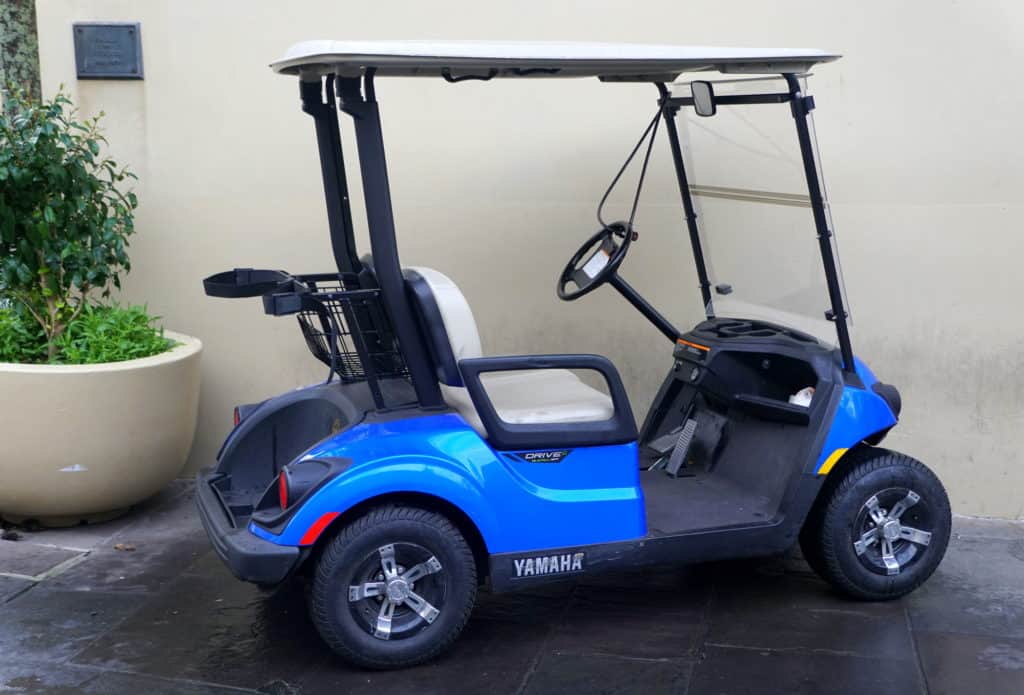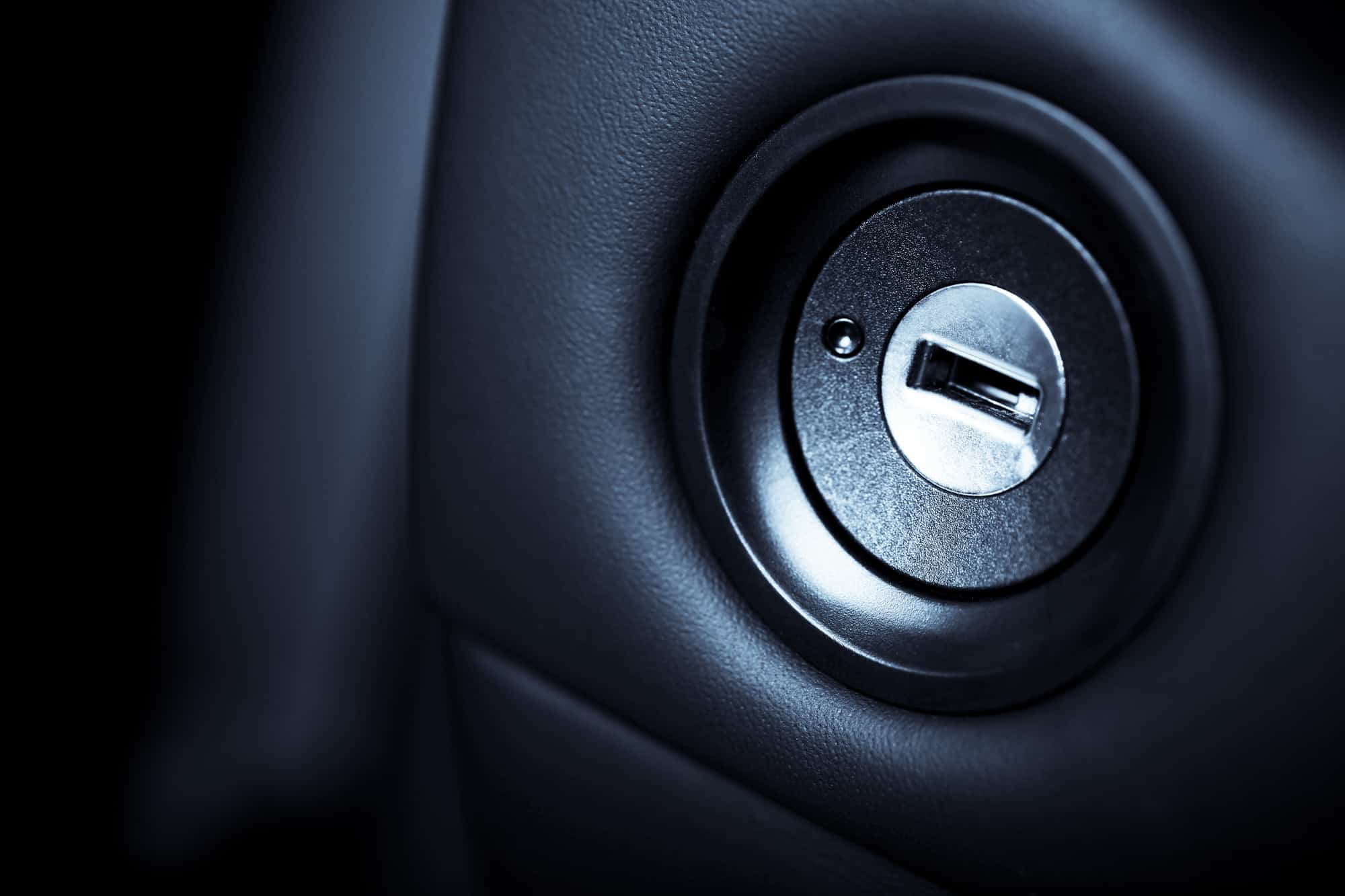
Golf cart starter generators do exactly what they sound like they would do – they provide power to the starter that helps to make sure a cart runs smoothly.
However, this part may end up experiencing some wear and tear problems that complicate its effectiveness.
As a result, it is typically a good idea to understand more about this part, including common problems that impact it.
Table Of Contents
The Nature of a Golf Cart Starter Generator
Typically, this part exists on fairly small vehicles that have an electric starter and motor.
As a result, you can find them on many vehicles such as golf carts and even lawnmowers.
However, even gasoline variations of these vehicles can have a starter generator.
Most of the time, these components are made out of a handful of parts and provides a few different processes that start up a cart.
It starts by pulling electricity from the battery once the ignition switch is turned on your cart.
At this point, the contactor for the electrical connection is closed, which helps to start the engine.
Then, the generator starts to act as a small motor and generators power to turn over the engine.
Typically, this then sends power to the spark plug to ignite the gasoline in gas-powered vehicles.
This process occurs in the starter, which is a component that includes winding, armatures, brushes, and a stator.
Each of these parts serves a different role, such as the armature creating a field coil that helps to produce a magnetic field.
The generator portion of this part uses the initial burst of electricity from the battery to produce a consistent flow of electricity that helps manage the cart operation.
When this part works properly, it should work almost instantly to produce your cart with a proper level of starting energy.
However, when it fails to operate smoothly, you’re going to find that it is quite exasperating because your cart will not run properly or smoothly.
Therefore, it is critical to take the time to fully understand a few of the issues that may affect this element of your engine.
Common Issues That May Affect The Starter Generator
A golf cart starter generator is typically a fairly simple part that doesn’t run into too many complications.
However, there are times when various elements of the engine may start to fail.
When this happens, cart owners are going to find themselves challenged to replace the part after testing it, to ensure that they don’t end up with a faulty element that affects their cart’s operation.
For example, owners may find that their starter fails to turn the engine over until the pedal has been held for several seconds.
If there is a hum from the starter and generator while you hold the pedal down, you may have an issue with your voltage.
Start by checking your voltage using a voltmeter set to DC.
Connect to the F2 and the A1 terminals – positive and negative, respectively – and see how many volts you get when you press the pedal.
You should get at least 12.
If you’re not, you may have a dead spot on your armature.
This problem is one that will require you to fully replace the generator or the armature.
Likewise, you may also run into issues with cables fraying on your generator – thankfully, you can usually just replace these cables on your own and get good results from your generator after you replace them.
You may also hear a ticking in your controller box that may be a cause of alarm.
This ticking is often caused by multiple components, such as bearings and much more.
This clicking sound isn’t the worst thing in the world to hear but you should talk to a professional right away.
Video: Troubleshooting a Golf Cart Starter Generator
Removing a Golf Cart Starter Generator
When you experience problems with your cart operation, you may want to remove your golf cart starter generator to ensure that it is not the problem.
This process is one that requires a few steps that can be quite challenging for some to handle but which should also be fairly easy if you’ve ever worked on a golf cart.
The steps below should give you an idea of this process:
- Disconnect the negative battery cable to start
- Carefully remove the top and bottom bolts of the generator – these may require a powered wrench
- Slowly remove the belt of the starter generator and place it around the engine to avoid issues
- Remove all of the wires attaching the starter generator to your engine
- Write down where each wire goes by wrapping a piece of tape around the free end and writing down their location on the tape
At this point, you can carefully remove the starter generator.
Why would you want to remove the generator?
There are several reasons.
First of all, you may want to perform a bench test to see whether it is working.
We’ll discuss this process in the section below to help you better understand what you are doing.
However, you may also want to replace the generator with a new one using this process:
- Carefully insert the new unit into the engine and put the belt into place around it
- Adjust the belt’s tension with the adjuster bolt to keep it taut with the generator
- Tighten the mounting bolts to hold the new generator into place
- Connect the loose wires to the new generator and test them by touching the battery cables to the battery – there should be no large spark and, if there is, a connection is wrong
Video: Example of Removing a Golf Cart Starter Generator on a Club Car DS
Basic Bench Testing Process
Bench testing a golf cart starter generator is an off-vehicle test that may be useful for those who have either purchased a new starter generator or who know how to remove it from their cart without issue.
We are covering it here before the on-vehicle process because it should help to give you a better idea of the unique demands that you’ll experience.
Typically, you’ll need battery jumper cables, 10-gauge jumper wire, a working battery, and a vice to hold the starter properly.
Then, you need to carefully place the starter generator in the vice, tightening it slightly to ensure that it doesn’t get out of control while the generator runs.
At this point, you then need to connect the 10-gauge jumper wire between the F1 and A2 terminals.
This black wire should help to produce a smooth flow of electricity that makes it easier to gauge how your battery operates and whether your starter needs any upgrades to properly operate your vehicle.
Now, attach the positive battery cable to the positive terminal on the batter.
Touch the negative end to the F2 stud on the generator.
When you do this, you should get the motor to start turning.
It should move in a counterclockwise direction when you have them attached this way.
If you find that the generator does not run at all, there is a problem that may require you to replace your golf cart starter generator with a new one that runs smoothly and efficiently.
Replacing Generator Brushes and Wiring the Generator
The brushes in your starter generator help to keep it running smoothly and are often the first part to malfunction.
As a result, it is a good idea to understand how to remove them if you notice that your generator isn’t working properly.
The following steps are fairly simple for most to follow:
- Carefully unscrew all of the screws at the end of the case
- Slowly pull the starter out of its case to get easier access to its brushes
- Inspect each brush to make sure that they are broken and make sure you know exactly where to put them back in once you are done – some people take pictures on their phone to help here
- Carefully clean the brushes, if necessary, or replace them using your hands and a proper wrench to hold them down
- Put on a face mask and use a concentrated black of air to break apart any of the dust that may have appeared while you were changing or replacing the brushes
At this point, your brushes should work more efficiently and give you the help that you need to keep your generator strong.
However, there’s also a good chance that you may need to perform other steps, such as wiring or re-wiring your starter generator.
Video: Example of Changing Golf Cart Starter Generator Brushes
This process is something that may seem hard but is surprisingly simple depending on your engine:
- Connect the positive battery terminal to the input on the solenoid
- Attach A1 to the output on the solenoid
- Use a wire to attach A2 to D1 and then D2 to the negative battery terminal
- Energize the starter solenoid to see if the starter turns in the right direction
- If not, change your wiring to ensure proper directional spin
Testing Golf Cart Generators Based on Model
Before we go into a step-by-step guide for different starter generators based on the manufacturer, let’s go over the basic process that you’re likely to see in most carts:
- Activate the neutral lock-out cam
- Put the directional level in neutral
- Block the wheels so that the cart cannot move
- Connect each of the wires properly and tighten as needed
- Remove all of the wires on the starter generator terminal
- Place your black probe of the voltmeter against the starter generator housing
- Attach the red probe to A1, A2, F1, F2, and DF – you should get a “no continuity” reading
- If you get another reading from a terminal, something is wrong with it, such as a grounded field coil
- Take off the ground wire from A2 and the green wire of A1
- Set the voltmeter to ohms and put the red probe on A1 and the black on A2
- Repeat these steps for F1, F2, and DF – you should get a “continuity” reading from all
This step should help you gauge your starter operation but you can also test your generator by following these steps:
- Perform steps 1-4 as mentioned above
- Carefully remove the yellow wire from the DF terminal on the generator
- Ground the DF terminal to the A2 terminal with a jumper cable
- Place the red probe on the positive probe of the battery and the black on the negative
- Turn on the switch key and press the accelerator to run the engine at full speed
- The voltage should rise during this process – if it does, check your voltage regulator and if not your generator may need repairs
This process is typically the basic one that you’ll go through on most carts.
However, there are slight variations in these steps that must be discussed below to ensure that you don’t end up making a mistake and causing issues when testing your cart.
Testing a Yamaha G1 Starter Generator
- Perform steps 1-4 in the basic process mentioned above
- Disconnect all of the wires on your generator
- Connect post F2 to the positive cart battery terminal and A1 to the negative
- With this connection, your starter should move forward when activated
- Connect A2 to the negative terminal and activate starter – it should run in reverse
- While this is happening, use a voltmeter to gauge the ohms running through the red and green wires
- You should have about five ohms – if any of these elements are inaccurate, you have a problem
Testing a Club Car 98 Starter Generator
- Perform steps 1-4 as mentioned in the first steps of this section
- Remove all wires from the starter generator terminals
- Put the black probe of the voltmeter on the starter generator housing
- Place the red probe on A1, A2, F1, F2, and DF terminals in that order – you should get “no continuity” readings
- Take the ground wire from the A2 terminal and the green from the A1 terminal
- Test the ohms of these wires by placing the red probe on the A1 terminal and the black on the A2 terminal – you should get a reading of “continuity”
- Check the other wires in this same way to fully check the starter generator
Testing a Club Car Precedent Starter Generator
- Follow steps 1-4, as mentioned in the first section
- Remove the yellow wire from your generator assembly
- Connect the terminal to an appropriate eyelet with 14-gauge wire
- Touch the battery with the wire while the cart is running
- Use a voltmeter to see if you are picking up any voltage – if you are, the generator is fine
Testing an EZYGO Starter Generator
- Prepare your cart using steps 1-4, as you do with all carts
- Take the green wire from the regulator but keep the other wire attached
- Ground this wire to a properly-grounded item
- Check the voltage of the generator using a voltmeter
- Read the voltage to make sure it is around 18-19 volts – if not, there is a problem with your starter generator
Video: Example of Testing The Starter Generator
Golf Cart Starter Generator FAQ
Q: Why do cart generators vary between models?
A: Although the basic setup of a golf cart’s engine is typically the same between models and manufacturers, small variations may exist.
Therefore, it is critical to follow all of the steps mentioned above to avoid any complications.
Q: What noises should my starter generator make?
A: When operating properly, your golf cart starter generator should make no noise.
If you find that it does, you likely have a problem that will require a professional to handle.
Q: Why do electric carts have these generators?
A: Though these generators are critical for gasoline engines, many electric models have them.
However, they are slightly different and work more as an alternator or a control system that ensures your battery doesn’t use too much electricity.
Q: What symptoms indicate my golf cart starter generator has a problem?
A: Typically, you’ll start to notice problems if your golf cart doesn’t start properly or if it takes longer to turn over than normal.
Strange noises during the ignition process, flickering lights, and other problems may all indicate problems with your generator, such as frayed wires or inaccurate operation.
Q: Where can I find replacement starter generators and parts?
A: Typically, you should find replacement starter generators and various parts at any golf cart shop near you.
You may need to shop based on the manufacturer, as some stores are focused on just one provider.
As a result, you may not be able to get the parts you need at a general shop.
Final Thoughts
If any of these steps seem too difficult for you to handle, always call a professional right away to ensure that you do everything properly.
Making a mistake on your cart’s starter-generator may not seem like a major problem but it can cost you good money because you may end up having to not only install a new generator but a new engine.
So be careful and choose your battles properly here.



Leave a Reply